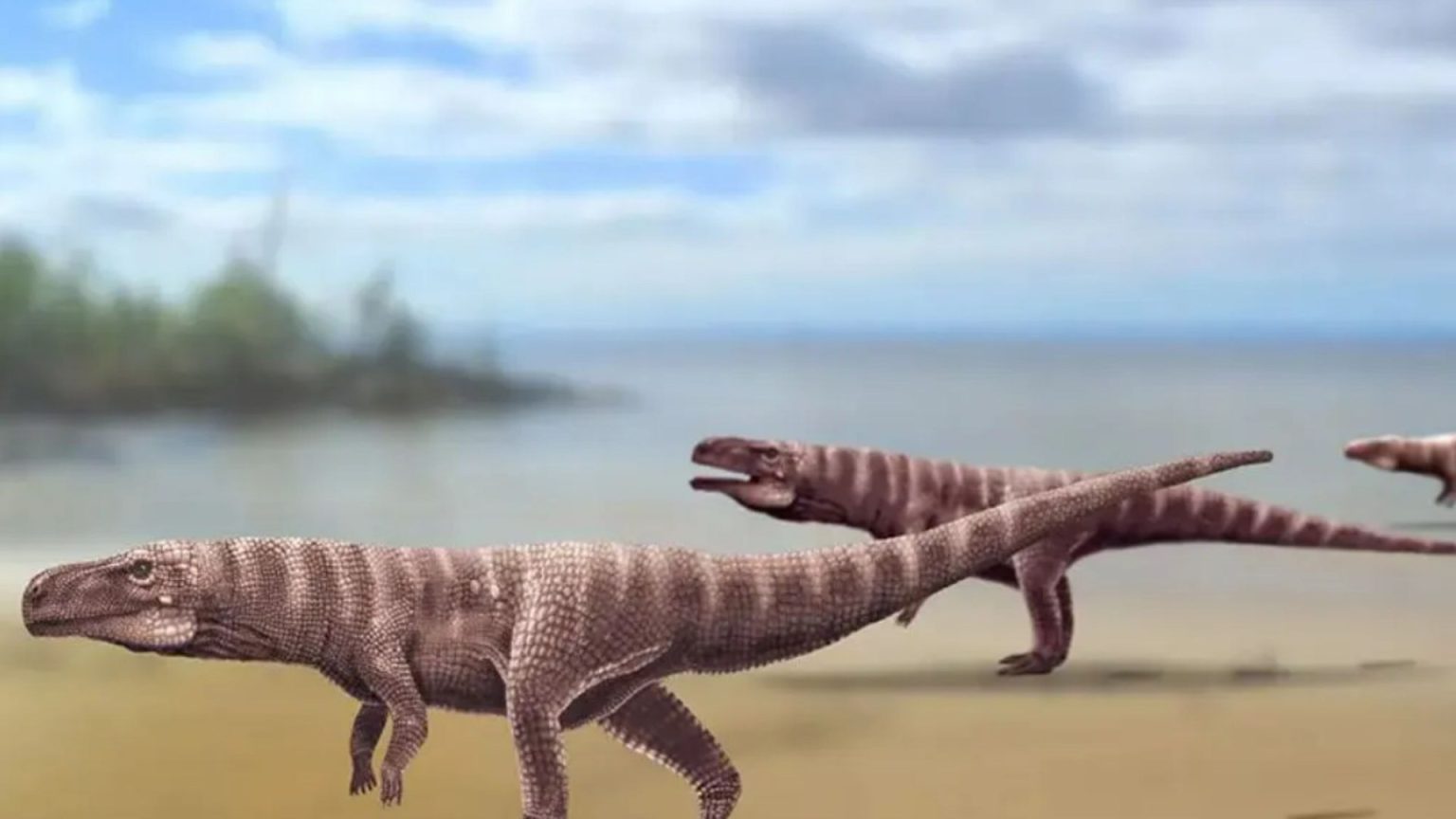The discovery of nearly one hundred fossilized footprints in South Korea’s Jinju Formation has sparked a scientific debate regarding the existence of a bipedal crocodile ancestor. These 18-24cm long indentations, remarkably preserved in what was once the muddy shore of a lake, date back 110-120 million years to the Early Cretaceous period. The international team of researchers responsible for analyzing the tracks propose that they belong to a previously unknown species of crocodile, Batrachopus grandis, which moved on two legs, challenging conventional understanding of crocodile locomotion. The tracks display a distinctive gait, with one foot placed directly in front of the other, reminiscent of a tightrope walker and lacking any tail drag marks, strongly suggesting bipedalism. This posture aligns more closely with the movement of theropod dinosaurs like T. rex than with modern crocodiles.
The distinct characteristics of the footprints provide further clues about Batrachopus grandis. Each print clearly displays four toes, with the smaller toes positioned on the inside of the foot. The heel impressions are pronounced, indicative of a flat-footed gait, much like humans and unlike dinosaurs who walk on their toes. Remarkably, the fine details of the toe pads and scales are preserved, providing a rare glimpse into the creature’s skin texture. Based on the size and spacing of the footprints, scientists estimate that Batrachopus grandis measured approximately 13.1 feet in length, weighed close to half a tonne, and possessed legs comparable in length to human legs. This sizable predator, equipped with razor-sharp teeth, likely preyed upon a variety of creatures, including dinosaurs.
The interpretation of these footprints as belonging to a bipedal crocodile has met with skepticism from some members of the scientific community. Critics point to the inward rotation of the feet in the trackway, contrasting with the outward rotation observed in modern crocodiles during galloping. The absence of webbing between the toes, a characteristic present in modern crocodiles, also raises questions about the proposed classification. Some paleontologists suggest the tracks may belong to a dinosaur, although the distinct heel impressions argue against this. The lack of fossilized skeletal remains of Batrachopus grandis further complicates the issue, leaving footprints as the sole evidence for its existence.
Despite the controversy, the discovery provides compelling evidence for a crocodylomorph, a larger ancestor of modern crocodiles, exhibiting a unique form of locomotion. The footprints, initially misinterpreted as belonging to a pterosaur, a type of flying reptile, offer invaluable insights into the diversity of prehistoric life and the evolutionary history of crocodiles. The abundance of footprints, nearly one hundred in total, highlights the prevalence of this creature in the region during the Early Cretaceous. While the precise classification of Batrachopus grandis remains debated, its existence challenges conventional notions of crocodile behavior and underscores the ongoing evolution of our understanding of the prehistoric world.
The ongoing debate surrounding the Batrachopus grandis footprints underscores the challenges faced by paleontologists in reconstructing the past based on fragmented evidence. The absence of skeletal remains necessitates reliance on footprints, which while informative, can be open to multiple interpretations. The differing opinions within the scientific community highlight the importance of rigorous analysis and the value of diverse perspectives in advancing our understanding of prehistoric life. Further research, including the potential discovery of fossilized bones, will be crucial in resolving the debate and definitively placing Batrachopus grandis within the evolutionary tree of life.
The discovery of these unusual footprints in South Korea adds to a growing body of evidence that challenges traditional perceptions of crocodiles as sluggish, aquatic reptiles. It hints at a more dynamic and diverse evolutionary history, with some branches of the crocodylomorph lineage exploring terrestrial habitats and adopting unique modes of locomotion. The Batrachopus grandis trackway, regardless of its ultimate classification, serves as a reminder of the vast unexplored territories of prehistory and the potential for surprising discoveries that continue to reshape our understanding of life on Earth.


